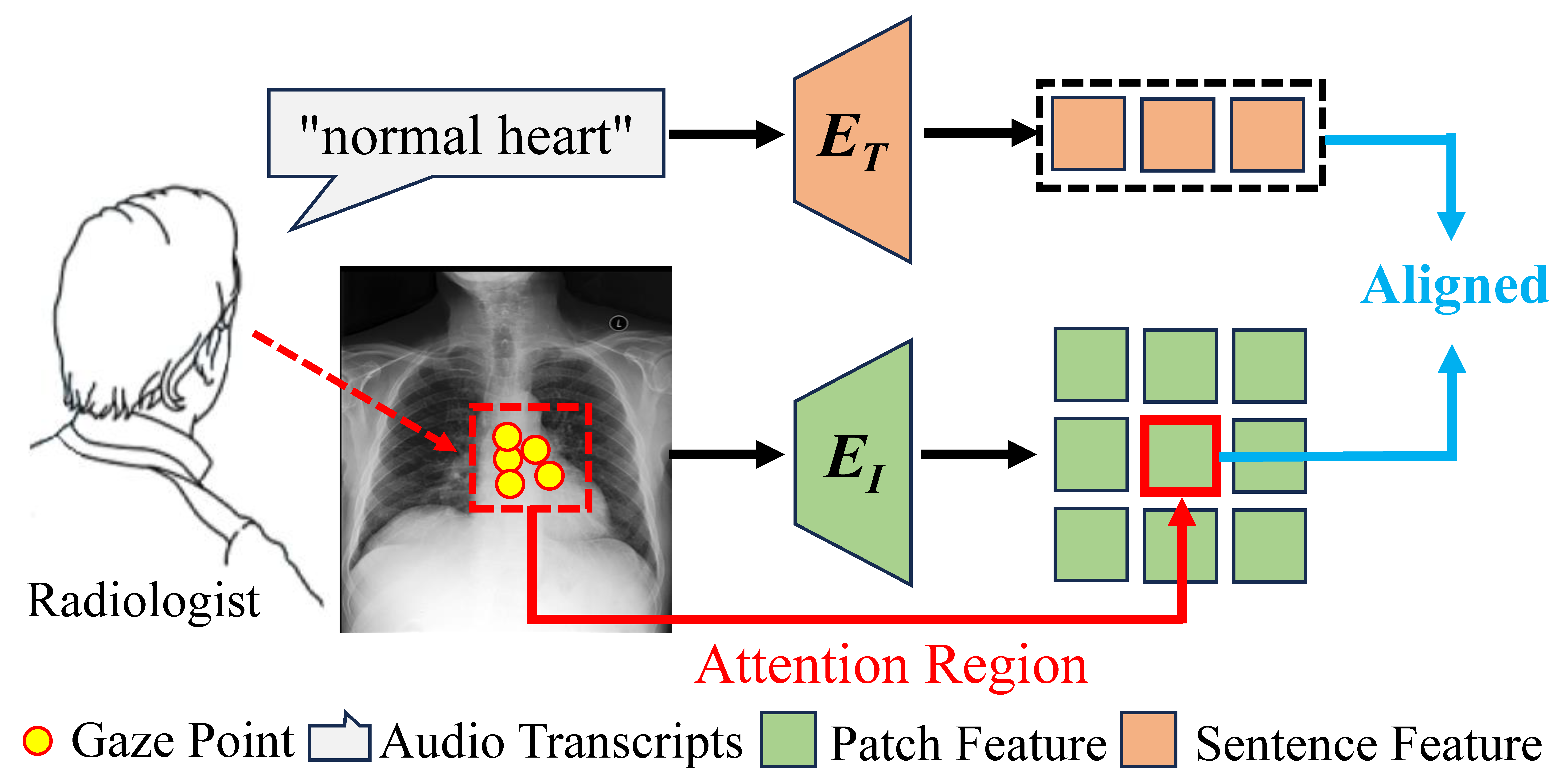Eye-gaze Guided Multi-modal Alignment Framework for Radiology
In multi-modal frameworks, the alignment of cross-modal features presents a significant challenge. The predominant approach in multi-modal pre-training emphasizes either global or local alignment between modalities, utilizing extensive datasets. This bottom-up driven method often suffers from a lack of interpretability, a critical concern in radiology. Previous studies have integrated high-level labels in medical images or text, but these still rely on manual annotation, a costly and labor-intensive process. Our work introduces a novel approach by using eye-gaze data, collected synchronously by radiologists during diagnostic evaluations. This data, indicating radiologists' focus areas, naturally links chest X-rays to diagnostic texts. We propose the Eye-gaze Guided Multi-modal Alignment (EGMA) framework to harness eye-gaze data for better alignment of image and text features, aiming to reduce reliance on manual annotations and thus cut training costs. Our model demonstrates robust performance, outperforming other state-of-the-art methods in zero-shot classification and retrieval tasks. The incorporation of easily-obtained eye-gaze data during routine radiological diagnoses signifies a step towards minimizing manual annotation dependency. Additionally, we explore the impact of varying amounts of eye-gaze data on model performance, highlighting the feasibility and utility of integrating this auxiliary data into multi-modal pre-training.
PDF Abstract


 CheXpert
CheXpert
 MIMIC-CXR
MIMIC-CXR